
The following Data Nuggets are written by LTER scientists and created using LTER Data.
To learn more about the ongoing collaboration between Data Nuggets and the LTER, check out our blog posts, “Data Nuggets: small activities with big impacts for students” and “LTER Data Nuggets: Breathing new life into long-term data“. If you have any questions about the research in an LTER Data Nugget, or want help accessing original datasets, please contact us or the Education and Outreach Coordinator (EOC) for that site.
| Title | LTER Site | EOC & Website | Content Level | Summary | |
|---|---|---|---|---|---|
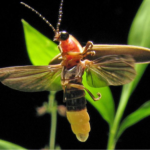 | Blinking out? | Kellogg Biological Station LTER | Liz Schultheis | 2 | Many people have fond memories of watching fireflies blink across open fields and collecting them in jars as children. This is one of the reasons why fireflies are a beloved insect species. However, there is concern that their populations are in decline. Scientists turned to the longest-running study of fireflies known to science to see if this is the case! |
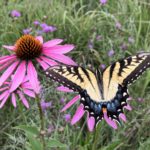 | Little butterflies on the prairie | Kellogg Biological Station LTER | Liz Schultheis | 2 | Many farmers are concerned with growing our food while still protecting habitat wildlife. They want to know - how can we grow food for ourselves while still providing good habitat for other species? Prairie strips are a new idea that might help both farmers and the environment. These strips are small areas of prairie that can be added to farm fields. They look like rows of flowers and grasses within a field. They create habitat for many species, like butterflies, birds, ants, and even microscopic fungi and bacteria! |
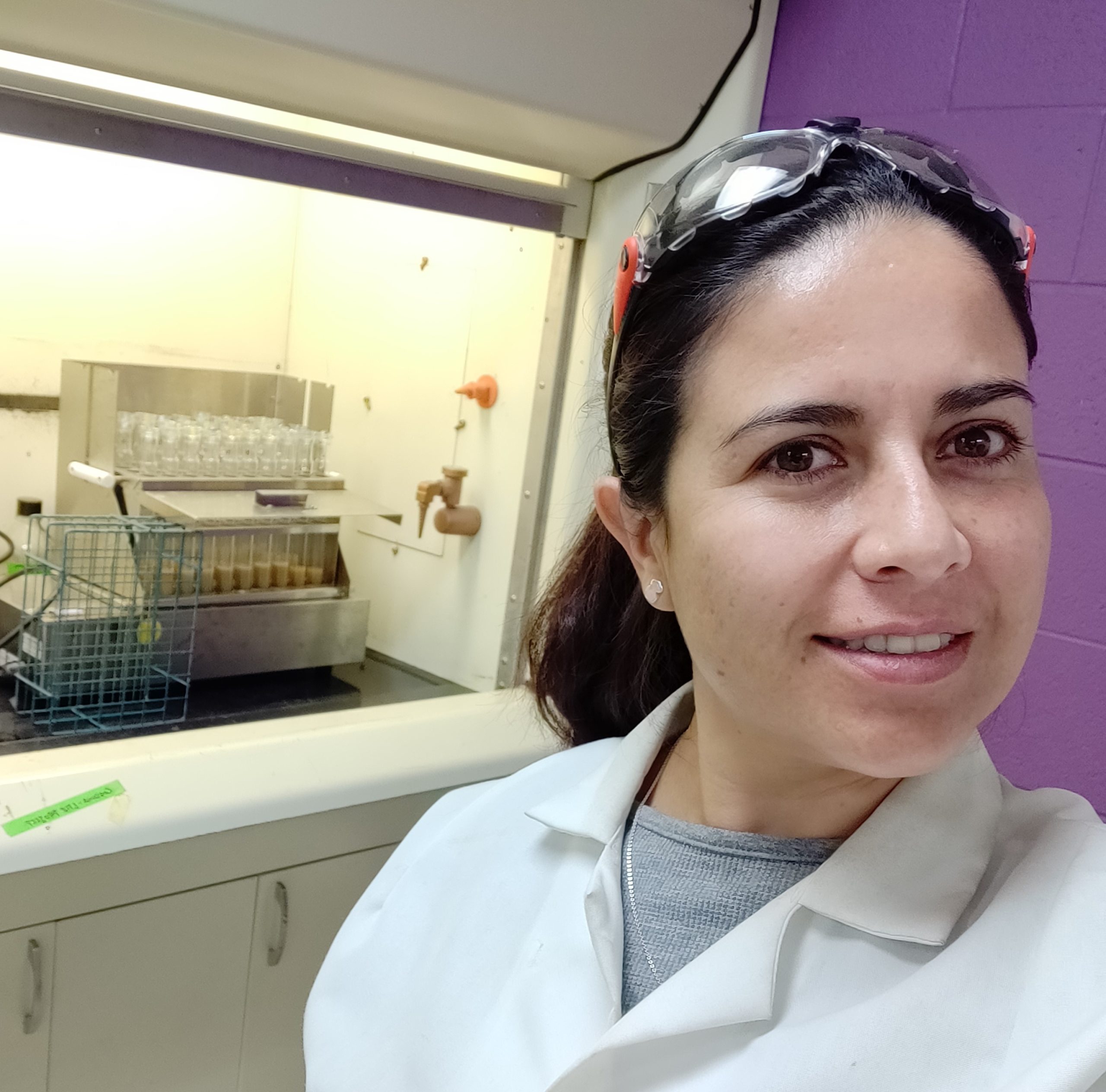 | Farms in the fight against climate change | Kellogg Biological Station LTER | Liz Schultheis | 2 | Different farming practices affect the amount of carbon stored in soil, an important factor for soil health and climate change. Soil scientist Caro analyzed long-term data from a 30-year experiment at Kellogg Biological Station, comparing four land management types—including conventional farming, no-till, and cover crops—to see which ones best increase soil carbon. Her work helps identify practices that benefit both farmers and the planet. |
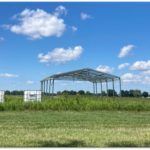 | Microbes facing tough times | Kellogg Biological Station LTER | Liz Schultheis | 3 | As the climate changes, Michigan is expected to experience more drought. Scientists are looking into how crop mutualistic interactions with microbes may help them withstand drought periods. First they need to know how microbes are impacted by different carbon and drought conditions. |
 | Bringing back the Trumpeter Swan | Kellogg Biological Station LTER & Kellogg Bird Sanctuary | Liz Schultheis | 3 | Trumpeter swans are the biggest native waterfowl species in North America. At one time they were found across North America, but by 1935 there were only 69 known individuals in the continental U.S.! In the 1980s, many biologists came together to create a Trumpeter Swan reintroduction plan. Since then the North American Trumpeter Swan survey has been conducted to measure swan populations and determine whether this species is recovering. |
 | Growing energy: comparing biofuel crop biomass | Kellogg Biological Station LTER & University Wisconsin-Madison GLBRC | Liz Schultheis | 3 | Corn is one of the best crops for producing biomass for fossil fuels, however it is an annual and needs very fertile soil. To grow corn, farmers add a lot of chemical fertilizers and pesticides to their fields. Other crops, like switchgrass, prairie, poplar trees, and Miscanthus grass are perennials and require fewer fertilizers and pesticides to grow. If perennials can produce high levels of biomass with low inputs, perhaps they could produce more biomass than corn under certain low nutrient conditions. |
 | A difficult drought | Kellogg Biological Station LTER & University Wisconsin-Madison GLBRC | Liz Schultheis | 2 | Biofuels are made from plants that are growing today, and are being considered as an alternative to fossil fuels. To become biofuels, plants need to go through a series of chemical and physical processes that transform the sugars into ethanol. Scientists are interested in seeing how yeast’s ability to transform sugar into fuel is affected by environmental conditions in fields, such as temperature and rainfall. They used data from a year with drought and a year with normal rainfall to determine if plants that grew under drought conditions were lower quality for ethanol production. |
 | Fertilizing biofuels may cause release of greenhouse gasses | Kellogg Biological Station LTER & University Wisconsin-Madison GLBRC | Liz Schultheis | 3 | One way to reduce the amount of greenhouse gases we release into the atmosphere could be to grow our fuel instead of drilling for it. Unlike fossil fuels that can only release CO2, biofuels remove CO2 from the atmosphere as they grow and photosynthesize, potentially balancing the CO2 released when they are burned for fuel. However, the plants we grow for biofuels don’t necessarily absorb all greenhouse gas that is released during the process of growing them on farms and converting them into fuels. |
 | The ground has gas! | Kellogg Biological Station LTER & University Wisconsin-Madison GLBRC | Liz Schultheis | 3 | Nitrous oxide and carbon dioxide are responsible for much of the warming of the global average temperature that is causing climate change. Sometimes soils give off, or emit, these greenhouse gases into the earth’s atmosphere, adding to climate change. Currently scientists figuring out what causes differences in how much of each type of greenhouse gas soils emit. |
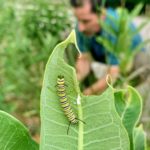 | Mowing for monarchs, Part I | Kellogg Biological Station LTER | Liz Schultheis | 2 | During the spring and summer months, monarch butterflies lay their eggs on milkweed plants. Milkweed plays an important role in the monarch butterfly’s life cycle. When milkweed is cut at certain times of the year new shoots grow, which are softer and easier for caterpillars to eat. Scientists set out to see if mowing milkweed plants could help boost struggling monarch populations. |
 | Mowing for monarchs, Part II | Kellogg Biological Station LTER | Liz Schultheis | 2 | When the scientists mowed down milkweed plants for their experiment, they changed more than the age of the milkweed plants. They also removed other plant species in the background community. Perhaps the patterns they were seeing were driven not by milkweed age, but by eliminating predators from the patches they mowed. |
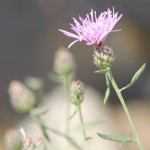 | Invasion Meltdown: will climate change make invasions even worse? | Kellogg Biological Station LTER | Liz Schultheis | 3 | Humans are changing the earth in many ways, including adding greenhouse gasses to the atmosphere, which contributes to climate change, and introducing species around the globe, which can lead to invasive species. Scientists wanted to know, could climate change actually help invasive species? Because invasive species have already survived transport from one habitat to another, they may be species that are better able to handle change, such as temperature changes. |
 | Springing forward | Kellogg Biological Station LTER | Liz Schultheis | 1 & 3 | What does climate change mean for flowering plants that rely on temperature cues to determine when it is time to flower? Scientists who study phenology, or the timing if life-history events in plants and animals, predict that with warming temperatures, plants will produce their flowers earlier and earlier each year. |
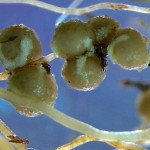 | Cheaters in nature – when is a mutualism not a mutualism? | Kellogg Biological Station LTER | Liz Schultheis | 4 | Mutualisms are a special type of relationship in nature where two species work together and both benefit. This cooperation should lead to each partner species doing better when the other is around – without their mutualist partner, the species will have a harder time acquiring resources. But what happens when one partner cheats and takes more than it gives? |
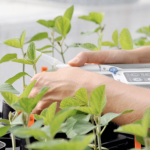 | Fair traders or freeloaders? | Kellogg Biological Station LTER | Liz Schultheis | 3 | One example of a mutualism is the relationship between a type of bacteria, rhizobia, and plants like peas, beans, soybeans, and clover. Rhizobia live in bumps on the plant roots, where they trade their nitrogen for sugar from the plants. Rhizobia turn nitrogen from the air into a form that plants can use. Under some conditions, this mutualism could break down, for example, if one of the traded resources is very abundant in the environment. |
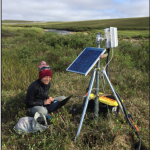 | Streams as sensors: Arctic watersheds as indicators of change | Arctic LTER | Amanda Morrison | 3 | As the world warms from climate change, the Alaskan Arctic is heating up. This is causing permafrost, or the frozen underground layer of rock and ice, to melt. When permafrost melts, plant material that has been stored for thousands of years begins to decay, releasing carbon and nitrogen from the system. Ecologists can act like “ecosystem accountants” measuring the balance of material that goes into and out of these systems. |
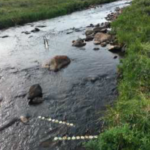 | Limit by limit: Nutrients control algal growth in Arctic streams | Arctic LTER | Amanda Morrison | 3 | Aquatic algae, a type of microbe that live in the water, need to take in nutrients from their surroundings for growth. Two important nutrients for algal growth are nitrogen (N) and phosphorous (P). Climate change may be altering which nutrients are limiting to algae, changing food webs in the ecosystem. |
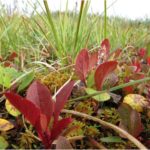 | Which tundra plants will win the climate change race? | Arctic LTER | Amanda Morrison | 3 | While you might think of the arctic tundra as a blanket of snow and polar bears, this vast landscape supports a diversity of unique plant and animal species. Climate change is altering the arctic environment. With warmer seasons and fewer days with snow covering the ground, soils are thawing more deeply and becoming more nutrient-rich. With more nutrients available, will some plant species be able to outcompete other species by growing taller and making more leaves than other plant species? |
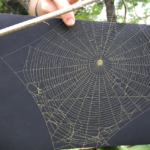 | Spiders under the influence | Baltimore Ecosystem Study LTER | Bess Caplan & Alan Berkowitz | 2 | People use pharmaceutical drugs, personal care products, and other chemicals on a daily basis. Often, they get washed down our drains and end up in local waterways. Chris knew that many types of spiders live near streams and are exposed to toxins through the prey they eat. Chris wanted to compare effects of the chemicals on spiders in rural and urban environments. By comparing spider webs in these two habitats, they could see how different the webs are and infer how many chemicals are in the waterways. |
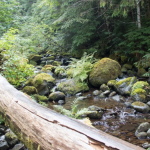 | All washed up? The effect of floods on cutthroat trout | Andrews Forest LTER | Kari O'Connell | 2 | Floods are very common disturbances in streams. If floods happen right after fish breed and eggs hatch, young fish that cannot swim strongly may not survive. Although floods can be dangerous for fish, they are also very important for creating new habitat. Cutthroat trout are a species of fish living in Mack Creek, which experiences occasional floods. Trout breed in the early spring, right at the peak of flooding, so scientists are collecting long-term data on this species. Will floods hurt trout populations or help? |
 | Trees and bushes, home sweet home for warblers | Andrews Forest LTER | Kari O'Connell | 4 | The vast coniferous forests of the Pacific Northwest provide surprisingly rich and diverse habitat types for birds. Andrews Forest is a long-term ecological research site where there have been manipulations of timber harvest and forest re-growth. This land use history has large impacts on the bird habitats found in an area. Each year since 2009, scientists have gone out and measured bird populations and habitat types. Two species of warbler, with very different habitat preferences, can give insight into how birds are responding to these disturbances. |
 | What grows when the forest goes? | Andrews Forest LTER | Kari O'Connell | 2 | The H.J. Andrews Experimental Forest in Oregon is a long-term research site where scientists study how ecosystems respond to disturbances like wildfire. After a major fire in 2023, biology teacher Matt and scientist Joe investigated how native and invasive plants recover from fires of varying severity. Using data from a 2020 fire, they analyzed plant communities to see if invasive species recovered more quickly than native ones. |
 | Benthic buddies | Beaufort Lagoon Ecosystems LTER | Katie Gavenus | 2 | Arctic lagoons support a surprisingly wide range of marine organisms! Marine worms, snails, and clams live in the muddy sediment of these lagoons. Having a rich variety of benthic animals in these habitats supports fish, which migrate along the shoreline and eat these animals once the ice has left. Ken, Danny, and Kaylie are interested in learning more about how the extreme seasons of the High Arctic affect the marine life that lives there. |
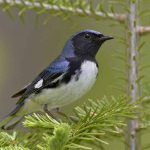 | The birds of Hubbard Brook, Part I | Hubbard Brook Experimental Forest | Sarah Garlick & Amey Bailey | 2 | Avian ecologists at the Hubbard Brook Experimental Forest have been monitoring bird populations for over 50 years. The data collected during this time is one of the longest bird studies ever conducted! What can we learn from this long-term data set? Are bird populations remaining stable over time? |
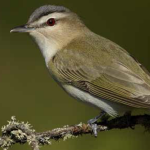 | The birds of Hubbard Brook, Part II | Hubbard Brook Experimental Forest | Sarah Garlick & Amey Bailey | 3 | Hubbard Brook was heavily logged and disturbed in the early 1900s. When logging ended in 1915, trees began to grow back. The forest then went through secondary succession, which refers to the naturally occurring changes in forest structure that happen as a forest ages after it has been cut or otherwise disturbed. Can these changes in habitat availability, due to succession, explain why the number of birds are declining at Hubbard Brook? Are all bird species responding succession in the same way? |
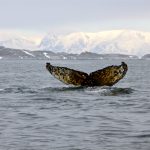 | When whale I sea you again? | Palmer Station Antarctica LTER | Janice McDonnell | 4 | People have hunted whales for over 5,000 years for their meat, oil, and blubber. Today, as populations are struggling to recover from whaling, humpback whales are faced with additional challenges due to climate change. Their main food source is krill, which are small crustaceans that live under sea ice. As sea ice disappears, the number of krill is getting lower and lower. Humpback whale population recovery may be limited because their main food source is threatened by ongoing ocean warming. |
 | Lizards, iguanas, and snakes! Oh my! | Central Arizona–Phoenix LTER | Lisa Herrmann | 3 | People have dramatically changed the natural riparian habitat found along rivers and streams. In many urban areas today, these riparian habitats are being rehabilitated with the hope of bringing back native species, such as reptiles. Reptiles, including snakes and lizards, are extremely important to monitor as they play important roles in ecosystems. Are rehabilitation efforts in Phoenix successful at restoring reptile diversity and abundance? |
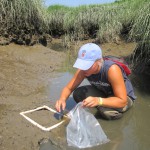 | The mystery of Plum Island Marsh | Plum Island Ecosystems LTER & The TIDE Project | David Moon | 3 | Salt marshes are among the most productive coastal ecosystems, and support a diversity of plants and animals. Algae and marsh plants feed many invertebrates, like snails and crabs, which are then eaten by larger fish and birds. In Plum Island, scientists have been fertilizing and studying salt marsh creeks to see how added nutrients affect the system. They noticed that fish populations seemed to be crashing in the fertilized creeks, while the mudflats were covered in mudsnails. Could there be a link? |
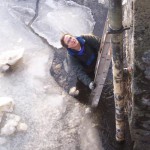 | Urbanization and estuary eutrophication | Plum Island Ecosystems LTER | David Moon | 4 | Estuaries are very productive habitats found where freshwater rivers meet the ocean. They are important natural filters for water and protect the coast during storms. A high diversity of plants, fish, shellfish and birds call estuaries home. Estuaries are threatened by eutrophication, or the process by which an ecosystem becomes more productive when excess nutrients are added to the system. Parts of the Plum Island Estuary in MA may be more at risk from eutrophication due to their proximity to urban areas. |
 | Does sea level rise harm saltmarsh sparrows? | Plum Island Ecosystems LTER | David Moon | 3 | For the last 100 years, sea levels around the globe have increased dramatically. Salt marshes grow right at sea level and are therefore very sensitive to sea level rise. Saltmarsh sparrows rely completely on salt marshes for feeding and nesting, and therefore their numbers are expected to decline as sea levels rise and they lose nesting sites. Will this threatened bird species decline over time as sea levels rise? |
 | Keeping up with the sea level | Plum Island Ecosystems LTER | David Moon | 3 | Salt marshes are very important habitats for many species and protect the coast from erosion. Unfortunately, rising sea levels due to climate change are threatening these important ecosystems. As sea levels rise, the elevation of the marsh soil must rise as well so the plants have ground high enough to keep them above sea level. Basically, it is like a race between the marsh floor and sea level to see who can stay on top! |
 | Is your salt marsh in the zone? | Plum Island Ecosystems LTER | David Moon | 3 | Beginning in the 1980s, scientist James began measuring the growth of marsh grasses. He discovered that their growth was higher in some years and lower in others and that there was a long-term trend of growth going up over time. Marsh grasses grow around mean sea level, or the average elevation between high and low tides. Are the grasses responding to mean sea level changing year-to-year, and increasing as our oceans warm and water levels rise due to climate change? |
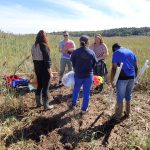 | Marsh makeover | Plum Island Ecosystems LTER | David Moon | 3 | The muddy soils in salt marshes store a lot of carbon, compared to terrestrial dry soils. This is because they are low in oxygen needed for decomposition. For this reason they play a key role in the carbon cycle and climate change. If humans disturb marshes, reducing plant diversity and biomass, are they also disturbing the marsh's ability to sequester carbon? If a marsh is restored, can the carbon holding capacity also be brought back to previous levels? |
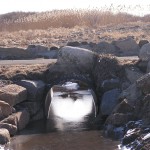 | Invasive reeds in the salt marsh | Plum Island Ecosystems LTER | David Moon | 2 | Phragmites australis is an invasive reed that is taking over saltwater marshes of New England, outcompeting other plants that serve as food and homes for marsh animals. Once Phragmites has invaded, it is sometimes the only plant species left, called a monoculture. Phragmites does best where humans have disturbed a marsh, and scientists were curious why that might be. They thought that perhaps it was caused by changing salinity, or amount of salt in the water, after a marsh is disturbed. |
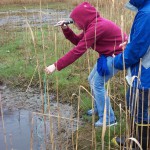 | Can a salt marsh recover after restoration? | Plum Island Ecosystems LTER | David Moon | 2 | Before restoration began, it was clear the Saratoga Creek salt marsh was in trouble. Invasive Phragmites plants covered large areas of the marsh, crowding out native plants and animals. Human activity was thought to be the culprit – storm drains were dumping freshwater into the marsh, lowering salinity. In 1999 a restoration took place to divert freshwater away from the marsh in an attempt to reduce Phragmites numbers. Did it work? |
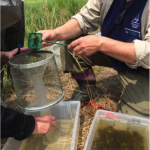 | Make way for mummichogs | Plum Island Ecosystems LTER | David Moon | 4 | Mummichogs are small fish that live in tidal marshes all along the US Atlantic coast. Because they are so widespread and can be found in most streams, they are a valuable tool for scientists looking to compare the health of different marshes. The absence of mummichogs in a salt marsh is a sign that it is highly damaged. Students collected data on mummichog numbers before and after a marsh restoration. Did the restoration successfully bring back mummichogs to the marsh? |
 | Do you feel the urban heat? | Florida Coastal Everglades LTER | Nick Oehm | 3 | Record-breaking temperatures climb higher every year, and Florida is no exception. These extreme temperatures affect organisms of all types, including humans. Irvin wanted to see how much the heat varies across Miami and compare it to the sensor at the airport that is used to issue heat warnings. He focused on sites where people gather outside - bus stops. He also chose sites that varied in shade coverage to see how temperatures fluctuate in different environments. |
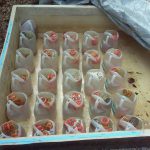 | The case of the collapsing soil | Florida Coastal Everglades LTER | Nick Oehm | 4 | The Everglades are a unique and vital ecosystem threatened by rising sea levels due to climate change. Recently scientists have observed in some areas of the wetland the soils are collapsing. What is causing this strange phenomena? Sea level rise might be stressing microbes, causing carbon to be lost to the atmosphere through increased respiration. |
 | The carbon stored in mangrove soils | Florida Coastal Everglades LTER | Nick Oehm | 2 | Mangroves are globally important for many reasons. They form dense forested wetlands that protect the coast from erosion and provide critical habitat for many animals. Mangrove forests also help in the fight against climate change by storing carbon in their soils. The balance between how much carbon is added to the soils and how much is released might be dependent on a variety of factors, including tree size and amount of disturbance to the site. |
 | Are forests helping in the fight against climate change? | Harvard Forest LTER | Clarisse Hart & Katharine Hinkle | 3 | In the 1990s, scientists began to wonder what role forests were having in the exchange of carbon in and out of the atmosphere. Were forests overall storing carbon (carbon sink), or releasing it (carbon source)? To test this, they built large metal towers that stand taller than the forest trees around them and use sensors to measure the speed, direction, and CO2 concentration of each puff of air that passes by. These long term measurements can tell us whether forests help in the fight against climate change. |
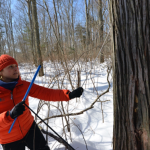 | A window into a tree’s world | Harvard Forest LTER | Clarisse Hart & Katharine Hinkle | 2 | Scientists are very interested in learning how trees respond to rapidly warming temperatures. Luckily, trees offer us a window into their lives through their growth rings. Growth rings are found within the trunk, beneath the bark. These rings provide a long historical record, which can be used to study how trees respond to climate change. |
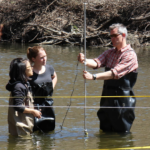 | Love that dirty water | Harvard Forest LTER | Clarisse Hart & Katharine Hinkle | 4 | As green spaces are lost to make room for homes and businesses, there are fewer forests and wetlands to filter our drinking water. A team of scientists used the New England Landscapes Future Explorer to study this challenge for the Merrimack River, an important river for the people of New England. |
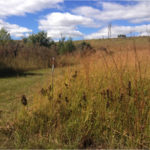 | Fertilizer and fire change microbes in prairie soil | Konza Prairie LTER | Jill Haukos | 4 | Prairies grow where three environmental conditions come together – a variable climate, frequent fires, and large herbivores roaming the landscape. However, prairies are experiencing many changes. For example, people now work to prevent fires, which allows forest species take over. In addition, land previously covered in prairie is now being used for agriculture. How do these changes affect the plants, animals, and microbial communities that inhabit prairies? |
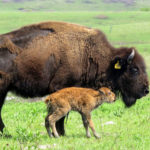 | Does more rain make healthy bison babies? | Konza Prairie LTER | Jill Haukos | 2 | The North American Bison is an important species for the prairie ecosystem. Bison affect the health of the prairie in many ways, and are also affected by the prairie as well. Each year when calves are born, scientists go out and determine their health by weighing them. This long-term dataset can be used to figure out whether environmental conditions from the previous year affect the health of the calves born in the current year. |
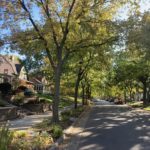 | Trees and the city | Minneapolis-St. Paul Metropolitan Area LTER | Meredith Keller | 3 | Trees provide important benefits, such as beauty and shade. The number and types of tree species that are planted in a neighborhood can increase the benefits received from trees in urban areas. Based on her own observations, Adrienne started conversations with her colleagues about differences in urban landscapes. They conducted a study to see how social demographics of neighborhoods may be related to tree species richness and tree cover. |
 | Do urchins flip out in hot water? | Santa Barbara Coastal LTER | Scott Simon | 1 & 3 | Periods of unusual warming in the ocean are called marine heatwaves. During marine heatwaves, water gets 2-3 degrees hotter than normal. That might not sound like much, but for an urchin, it is a lot. The research team decided to test whether marine heat waves could be stressing urchins by looking at a simple behavior that they could easily measure - how long it takes urchins to flip back over. |
